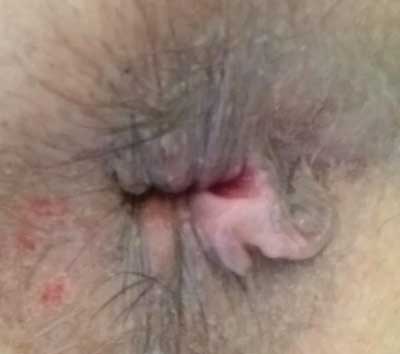*Małgorzata Kołodziejczak1, Przemysław Ciesielski1, 2
Cosmetic aspect of proctological surgeries
Kosmetyczny aspekt operacji proktologicznych
1Warsaw Proctology Centre, Saint Elisabeth Hospital in Warsaw
2Department of General Surgery District Hospital in Wołomin
Streszczenie
Estetyczny wygląd rany po operacji proktologicznej pozornie wydaje się być drugorzędnym celem w stosunku do wyleczenia choroby, jednakże może mieć wpływ na prawidłowe gojenie, skuteczność zabiegu i zachowanie funkcji czynnościowych odbytu. Kosmetyczne zabiegi korekcyjne dotyczące odbytu to przede wszystkim: wycięcie fałdów brzeżnych oraz zabiegi korekcyjne zniekształceń powstałych po operacjach proktologicznych. Autorzy przedstawiają wskazania do wycięcia fałdów brzeżnych, a także sytuacje, kiedy należy odstąpić od takiego zabiegu. Deformacje po operacjach proktologicznych to najczęściej deformacja typu „dziurki od klucza” powstała po operacji szczeliny ze sfinkterotomią tylną i operacji przetoki z drenażem sposobem Hipokratesa oraz deformacje powstałe w wyniku nieprawidłowego gojenia się rany. Poza złym efektem kosmetycznym deformacje mogą skutkować powikłaniami czynnościowymi w postaci nieszczelności odbytu, brudzenia bielizny i gorszego trzymania gazów i wówczas wymagają zabiegu korekcyjnego. Kolejną grupą pacjentów są chorzy z deformacją okolicy odbytu spowodowaną bliznami po licznych zabiegach proktologicznych bez ubytków czynnościowych. Postępowanie w tej grupie w dużej mierze zależy od psychicznego nastawienia pacjenta do deformacji i najczęściej nie operuje się tych chorych. Dobry efekt kosmetyczny po operacji proktologicznej często jest spójny z dobrym efektem czynnościowym i z satysfakcją pacjenta po zabiegu.
Summary
Although it may seem that the aesthetic appearance of a wound after proctological surgery is of secondary importance relative to the cure of disease, it may affect proper healing, treatment efficacy and the maintenance of anal function. Cosmetic correction of the anal region primarily includes removal of marginal anodermal folds and correction of deformities after proctological surgeries. We present indications for the removal of hypertrophied anodermal folds, as well as situations when such surgery should be abandoned. The most common deformities after proctological surgeries include keyhole deformity, which forms after anal fissure surgery with posterior sphincterotomy and surgical treatment of anal fistula with Hippocrates’ drainage, as well as deformities due to abnormal wound healing. In addition to poor cosmetic result, deformities may lead to functional complications in the form of anal leakage, underwear staining and poor gas continence, which requires surgical correction. Another group includes patients with anal deformity due to scars after multiple proctological procedures, but with no functional defects. The management in these patients largely depends on their mental attitude to these defects and usually no surgical treatment is implemented. Good cosmetic result after proctological surgery often corresponds with good functional outcome and patient’s postoperative satisfaction.

Introduction
Although it may seem that the aesthetic appearance of a wound after proctological surgery is of secondary importance relative to the cure of disease, it may affect proper healing, treatment efficacy and the maintenance of anal function.
When performing proctological procedures, it is important that the surgical wounds on the perianal skin are of appropriate width to create good drainage conditions. Tight wound suturing is avoided except for wounds at the base of the scrotum, which have a tendency to dehisce if not sutured. The best healing and, consequently, good cosmetic results, are seen for radial incisions in relation to the anal canal.
Cosmetic correction of the anal region primarily includes:
– excision of anodermal folds,
– correction of deformities after proctological surgeries.
Anodermal folds – a cosmetic defect or a clinical entity?
The term anodermal folds refers to anodermal hypertrophy, which may be caused by previous inflammations (e.g. marginal thrombosis). They vary is size and can sometimes produce symptoms, such as inflammation, pruritus or burning sensation. They may be the reason for sexual complexes in young women. However, most patients do not find them disturbing, and they are diagnosed during proctological examination for other reasons. Hypertrophied anodermal folds are mistaken for haemorrhoids by many patients. It also happens that women qualified for haemorrhoidectomy identify anodermal folds with haemorrhoids, expecting good postoperative cosmetic outcomes in the first place. It is very important in such cases to talk to the patient before the surgery and explain what to expect after the surgery, discuss the hierarchy of treatment goals and possible complications.
When to remove anodermal folds?
Anodermal folds should be removed in the following situations:
– when they are “hard” on palpation and raise a suspicion of anal cancer. Malignancies of the anal margin are rare and account for 3-4% of all anal cancers (fig. 1). The most common include Bowen’s disease (intraepithelial squamous cell cancer), Paget’s disease (intraepithelial adenocarcinoma), basal cell carcinoma and, less frequently, melanoma (1),

Fig. 1. Anal cancer in the mucosal fold
– if they often get inflamed (note that pruritus not always resolves after anorectal fold resection),
– at the patient’s explicit request (e.g. in women whose intimate sphere of life is affected by hypertrophied folds),
– during haemorrhoidectomy, with preservation of skin bridges between the wounds.
How to remove anodermal folds
Powyżej zamieściliśmy fragment artykułu, do którego możesz uzyskać pełny dostęp.
Mam kod dostępu
- Aby uzyskać płatny dostęp do pełnej treści powyższego artykułu albo wszystkich artykułów (w zależności od wybranej opcji), należy wprowadzić kod.
- Wprowadzając kod, akceptują Państwo treść Regulaminu oraz potwierdzają zapoznanie się z nim.
- Aby kupić kod proszę skorzystać z jednej z poniższych opcji.
Opcja #1
24 zł
Wybieram
- dostęp do tego artykułu
- dostęp na 7 dni
uzyskany kod musi być wprowadzony na stronie artykułu, do którego został wykupiony
Opcja #2
59 zł
Wybieram
- dostęp do tego i pozostałych ponad 7000 artykułów
- dostęp na 30 dni
- najpopularniejsza opcja
Opcja #3
119 zł
Wybieram
- dostęp do tego i pozostałych ponad 7000 artykułów
- dostęp na 90 dni
- oszczędzasz 28 zł
Piśmiennictwo
1. Wietfeldt ED, Thiele J: Anal Cancer and Retrorectal Tumors Malignancies of the Anal Margin and Perianal. Skin Clin Colon Rectal Surg 2009; 22(2): 127-135.
2. Mazier WP: Keyhole deformity. Fact and fiction. Dis Colon Rectum 1985; 28(1): 8-10.
3. Yüksel O, Bostanci H, Leventoğlu S et al.: Keyhole deformity: a case series. J Gastrointest Surg 2008; 12(6): 1110-1114.

